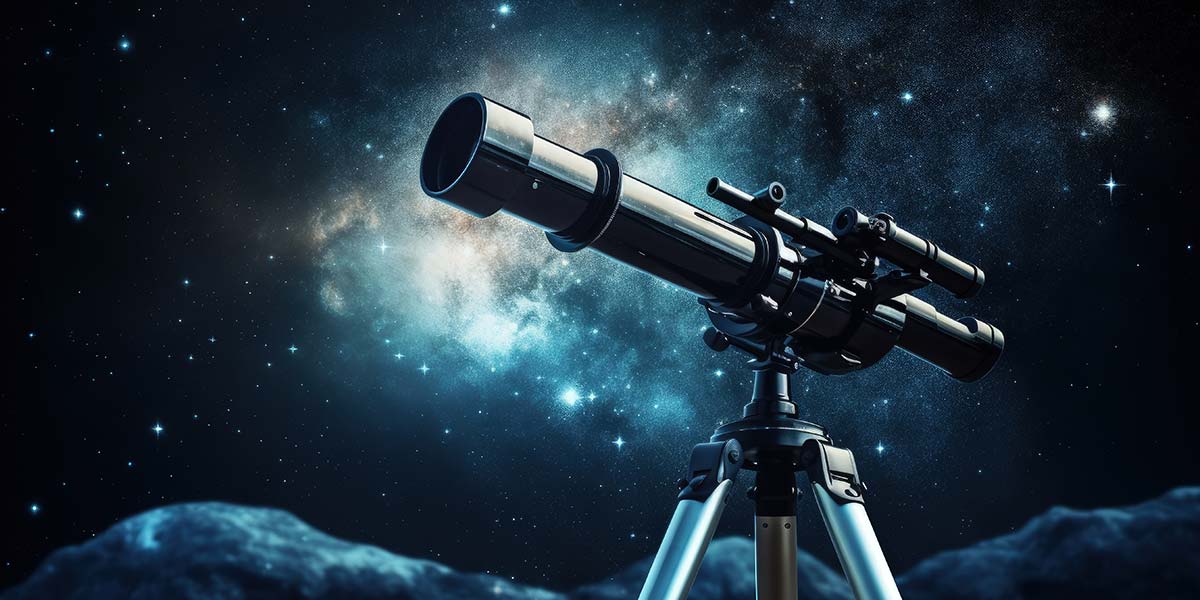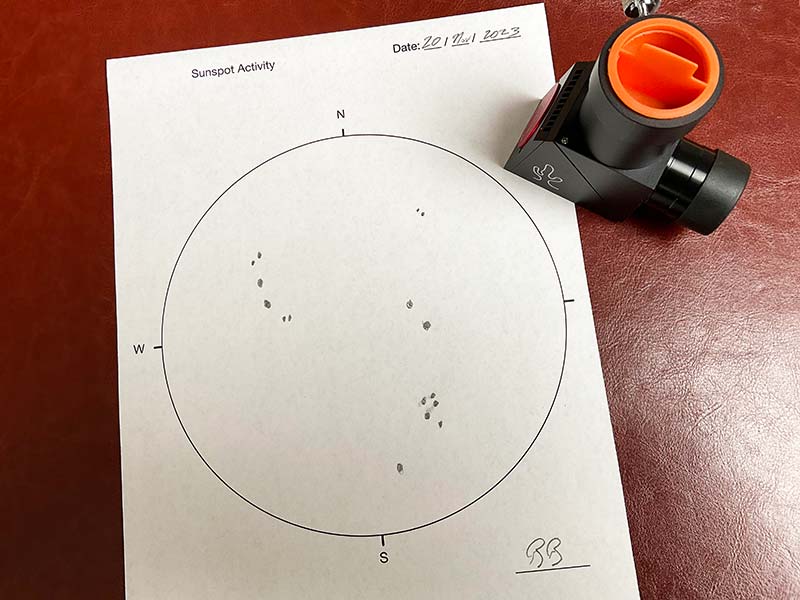
Robotics + AI + DSP = Astronomy
By Bryan Bergeron View In Digital Edition
As a ham radio operator, I’ve been an amateur astronomer by necessity. I’ve tracked the number of sunspots throughout every 11-year cycle since my youth to know which bands to use for the greatest communications distances or DX.
Because the number of sunspots is correlated with the solar flux, sunspot count is an indication of the amount of ionizing radiation the ionosphere receives from the sun. The higher the solar flux, the greater the electron density of the ionosphere and the more reflective the ionosphere to HF signals, and the higher the maximum useable frequency or MUF.
Signals higher than the MUF aren’t significantly reflected or bent by the ionosphere and head off into space. Practically speaking, a higher sunspot count is a sign that the higher HF bands such as 15 and 20 meters are available. A lower count means that 40 meters (my favorite band) is a better choice.
As we approach the current Cycle 25 maximum in 2025, HF communications are good but not great. Unfortunately, we’re at the peak of a relatively small maximum — virtually identical to the past Cycle 24. A generational anomaly associated with Sunspot Cycle 25 is the next total solar eclipse in North America. On April 8, 2024, the total eclipse will be visible from northern Mexico and Texas to New England. The next 11-year cycle will be on us again before we know it, but a total solar eclipse is a once in a lifetime event for most people. A total solar eclipse enables amateur astronomers with a chance to view the sun’s corona or outer atmosphere with minimum equipment.
As a robotics enthusiast, you owe it to yourself to investigate what contemporary astronomy has to offer in terms of a hobby and/or STEM learning experience. Practicing the art of astronomy requires a firm technical grasp of optics and/or electronics, robotics, and general physics, as well as the normal physiology of the optic system.
Consider, for example, the Sky Watcher SolarQuest robotic arm (i.e., telescope mount) available from Amazon for about $480. The telescope mount — designed to support astrophotography of the sun — takes out all the guesswork and most of the danger associated with taking photos of the sun. Simply attach a solar telescope or ordinary DSLR camera with appropriate ND filters on the mount and press the power-on button. Assuming it’s a clear day and the sun is visible, the onboard camera locates the sun and, using time and location data from the onboard GPS system, tracks the sun across the sky. Meanwhile, you’re free to use a dedicated monochrome astrophotography camera or DSLR to capture hundreds or thousands of hi-res digital images.
Because of the low signal-to-noise ratio in the images, the next step is to stack them in software in a way that amplifies the relevant pixels but not the background noise. I use Adobe Photoshop’s stack feature, but equally powerful software is available for free download. My favorite alternative to PhotoShop is DeepSkyStacker (http://deepskystacker.free.fr/english/index.html). DeepSkyStack is as powerful as PhotoShop but much easier to use. (And did I mention that it’s free vs. a monthly subscription fee for PhotoShop?)
If you have a chance to look up on April 8, make sure you have appropriate eye protection. At a minimum, consider a pair of paper “solar” glasses ($2) from Amazon or another online vendor. A step up is a pair of plastic sunglasses ($5) or even a pair of sun binoculars ($50).
Although there are specialized solar telescopes that provide narrowband images of the sun (I own several), the cost is prohibitive unless you plan to explore solar astronomy past the eclipse.
There’s no need to go overboard with the technology, at least at the beginning. I track sunspot activity with a 60 mm refractor telescope outfitted with a neutral density sun filter cap over the objective lens and draw the spots by hand (see photo).

If you haven’t yet purchased a telescope outfitted with solar viewing filters (or if you’re waiting for the huge second-hand market that will follow the solar eclipse), then you can track the solar weather through the NOAA Space Weather Prediction Service (www.swpc.noaa.gov).
I’ve only grazed the surface of what astronomy offers a robotics/science enthusiast. Hopefully, I’ve piqued your interest. In the meantime, look for my series on Astronomy, starting with an introduction to solar astronomy in this issue. SV
Article Comments